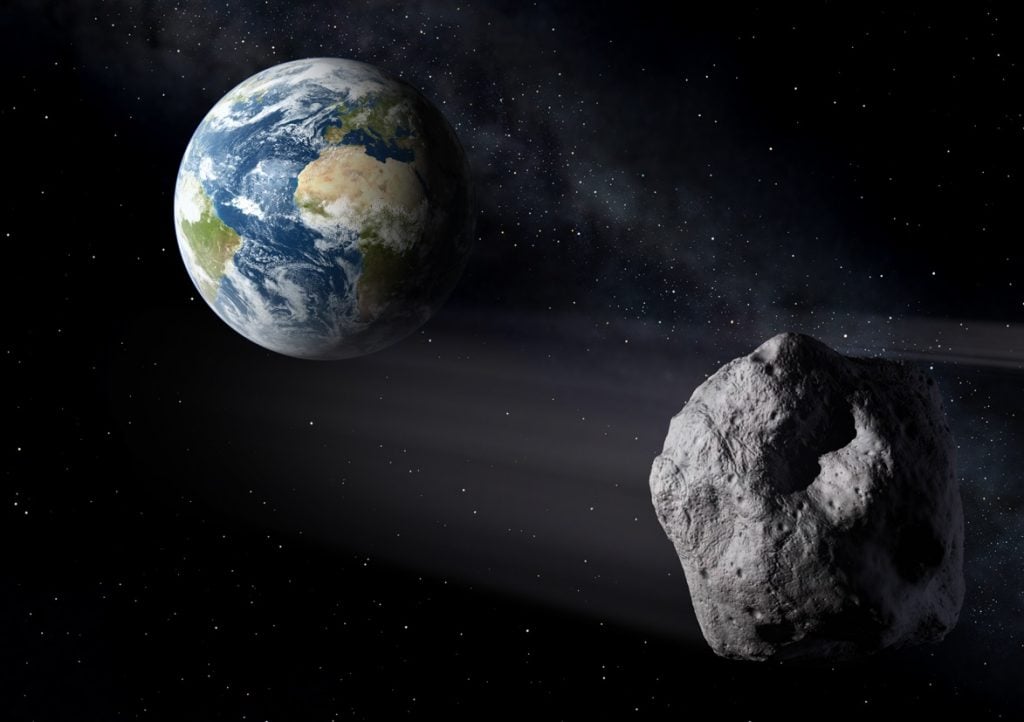Since the dawn of civilization, humanity has gazed at the night sky with wonder. The stars, planets, and the pale glow of the Moon have inspired myths, guided travelers, and fueled our deepest questions about existence. For millennia, the heavens were symbols of mystery and unattainable beauty, far beyond the reach of human hands. But as technology advanced, humanity slowly extended its reach outward. First, we launched rockets, then satellites, then people. We set foot on the Moon, sent probes across the solar system, and began unraveling the secrets of other worlds.
Now, a new possibility looms on the horizon—one that could transform not just space exploration but the entire structure of human civilization. That possibility is space mining: the extraction of resources from asteroids, the Moon, and other celestial bodies. At first glance, it seems like science fiction, a fantasy reserved for futuristic novels and movies. Yet, with each passing year, it becomes more plausible. Private companies are building spacecraft capable of reaching asteroids, governments are drafting laws for space resource utilization, and scientists are discovering that celestial bodies contain staggering quantities of valuable metals, water, and minerals.
The stakes are enormous. Done wisely, space mining could open a new era of abundance, providing resources beyond anything Earth alone can offer. Done recklessly, it could create economic chaos, geopolitical conflict, and even environmental disaster on a scale that extends beyond Earth. The question is no longer whether space mining is possible, but whether humanity is ready for the consequences of touching this cosmic treasure chest.
Riches in the Void
When we think of wealth, we think of gold, platinum, diamonds, and other rare materials that have driven human ambition for centuries. These treasures are scarce on Earth, but in space, they may exist in quantities so vast that our traditional notions of rarity could be shattered forever.
Asteroids, for example, are not just lifeless rocks floating through space. Many of them are rich repositories of metals that formed in the early solar system. Some contain vast amounts of nickel and iron, mixed with platinum-group metals such as rhodium, palladium, and iridium. These elements are critical for electronics, renewable energy technologies, and advanced industrial processes. On Earth, they are limited and expensive. In space, a single asteroid a few hundred meters wide could contain more platinum than has ever been mined in human history.
Then there is water—the lifeblood of both survival and technology. Water is essential for sustaining astronauts, but it is even more valuable as a source of rocket fuel. By splitting water into hydrogen and oxygen, we could refuel spacecraft in orbit, turning the Moon or near-Earth asteroids into interplanetary gas stations. This could radically reduce the cost of space exploration, enabling missions to Mars and beyond.
The Moon itself contains resources that tempt scientists and engineers alike. Helium-3, a rare isotope carried by the solar wind and trapped in lunar soil, is often imagined as a potential fuel for future nuclear fusion reactors. While practical fusion energy is not yet a reality, the possibility that the Moon could provide a nearly limitless clean energy source is profoundly alluring.
To put this into perspective, some economists have estimated that the mineral wealth of the asteroid belt between Mars and Jupiter could be worth quintillions of dollars—an amount so vast it defies comprehension. If even a fraction of this value could be harnessed, humanity would be dealing with wealth on a scale never before imagined.
The Pioneers of a New Gold Rush
The dream of space mining is not confined to distant generations. Today, major players are already preparing for the cosmic gold rush. Companies like Planetary Resources and Deep Space Industries, though facing financial struggles, have paved the way for a growing commercial interest in asteroid exploitation. National space agencies—NASA, the European Space Agency, Japan’s JAXA, and others—have already sent robotic missions to sample asteroids, returning tiny grains of material to Earth. These missions prove that space resource collection is not just possible but already happening, albeit on a very small scale.
NASA’s OSIRIS-REx mission returned samples from asteroid Bennu in 2023, and Japan’s Hayabusa missions collected samples from asteroids Itokawa and Ryugu. These are not large-scale mining operations, but they demonstrate the technology needed to interact with and extract resources from small bodies in space. The next step is scaling up—from grams of dust to tons of material.
Governments are also beginning to lay legal groundwork. The United States passed the Commercial Space Launch Competitiveness Act in 2015, granting American companies the right to own and sell resources extracted from celestial bodies. Luxembourg, a small European nation, has positioned itself as a hub for space mining investment by passing similar laws. The international legal framework is far from settled, but the race to claim rights in space has already begun.
This is often compared to the great gold rushes of the 19th century, when waves of people rushed to California, Alaska, and Australia, chasing fortunes in the ground. But unlike those frontiers, space mining requires billions in technology, advanced robotics, and interplanetary travel. It will not be lone prospectors with shovels, but massive corporations and national governments wielding spacecraft, artificial intelligence, and autonomous mining equipment. The space frontier is not wild; it is highly technical, and it will be controlled by those who can afford the incredible costs of reaching it.
Promise of Abundance
If humanity succeeds in harnessing space resources, the potential benefits are staggering. On Earth, industries rely on finite supplies of rare materials. Our smartphones, solar panels, and medical equipment depend on rare earth elements and metals like cobalt and platinum. These materials are often mined under dangerous conditions, sometimes involving human rights abuses and severe environmental damage. Space mining could relieve these pressures by providing new supplies without devastating Earth’s ecosystems.
More importantly, access to space resources could revolutionize the economics of exploration itself. Instead of carrying all supplies from Earth—a costly and limiting endeavor—future missions could harvest what they need along the way. Colonies on the Moon or Mars could extract local materials to build habitats, grow food, and sustain human life. This concept, known as in-situ resource utilization, is central to making long-term human presence in space feasible.
A space economy fueled by mining could generate entire new industries. Construction companies might build orbital habitats using asteroid metals. Fuel depots in orbit could refuel interplanetary spacecraft. Manufacturing in microgravity could produce exotic materials with properties impossible to replicate on Earth. The frontier of possibility widens dramatically when the solar system itself becomes our source of raw material.
For humanity, this abundance could be transformative. The fear of running out of resources—a shadow that has haunted civilizations for centuries—might finally be lifted. With metals and energy harvested from the cosmos, our species could move beyond scarcity into a new age of innovation and prosperity.
Shadows in the Starlight
But behind the dream lies danger. Space mining carries risks that could destabilize economies, ignite conflicts, and even threaten the environment of space itself.
One of the greatest dangers is economic disruption. The value of precious metals on Earth is based on their rarity. If a company returned with an asteroid filled with platinum, flooding the market, the price of platinum could collapse overnight. The sudden shift could devastate industries and economies dependent on stable values. Wealth could become meaningless if trillions in resources are suddenly accessible. What is priceless today could become worthless tomorrow.
Another risk is inequality. Access to space mining will not be evenly distributed. Only the wealthiest nations and corporations will initially have the technology to participate. This could create a new form of resource colonialism, where powerful players control extraterrestrial wealth while poorer nations are left behind. Instead of leveling the playing field, space mining might deepen global inequality, fueling resentment and conflict.
There is also the question of environmental impact—not just on Earth, but in space. Space is vast, but it is not infinite in terms of usable orbits and safe pathways. Mining operations could generate dangerous debris, increasing the risk of collisions in orbit. Improper handling of asteroids could accidentally shift their trajectories, creating catastrophic risks for Earth. Humanity has already polluted Earth’s environment; extending those habits into space could endanger the very frontier we seek to explore.
Finally, the absence of a clear international legal framework poses serious dangers. The Outer Space Treaty of 1967, signed by many nations, declares that celestial bodies are the common heritage of humanity and cannot be claimed by any one nation. But the treaty is vague on resource ownership, and new laws passed by individual nations challenge its spirit. Without a global agreement, space mining could trigger disputes, arms races, and even military conflict over extraterrestrial resources.
A Fork in the Cosmic Road
The future of space mining stands at a fork in the road. On one side lies a vision of abundance, progress, and human expansion across the solar system. On the other lies a path of chaos, inequality, and danger. The outcome depends not just on technology but on choices—choices about law, ethics, economics, and humanity’s relationship with the cosmos.
To pursue the path of abundance, humanity will need cooperation. Nations must work together to establish fair frameworks for sharing resources. Companies must adopt responsible practices that avoid reckless exploitation. Scientists must guide policymakers with evidence, not just ambition. And ordinary citizens must remain engaged, ensuring that space mining serves humanity as a whole, not merely the interests of a powerful few.
It is also essential to remember that not everything in space should be treated as a resource. Some celestial bodies may hold scientific secrets too precious to disturb. Asteroids may carry records of the early solar system; the Moon’s far side remains an untouched window into cosmic history. In the rush for profit, we must not destroy the very knowledge we seek to uncover.
Humanity’s Reflection in the Stars
Space mining is more than a technical challenge; it is a mirror held up to humanity. It forces us to confront questions about who we are and who we wish to become. Are we explorers seeking knowledge, or conquerors seeking profit? Will we extend the mistakes we made on Earth into the cosmos, or will we learn to balance ambition with responsibility?
The truth is that space mining will likely bring both riches and risks. It will not simply make us rich, nor will it inevitably destroy us. Instead, it will magnify the best and worst of human nature. The same ingenuity that can harvest metals from asteroids can also destabilize economies. The same drive that builds colonies on other worlds can also deepen inequalities at home. The outcome depends on the wisdom with which we wield our new power.
Albert Einstein once said, “The most incomprehensible thing about the universe is that it is comprehensible.” We have come to understand enough of the cosmos to imagine extracting its riches. But understanding is only the first step; wisdom must follow.
A Destiny Waiting Beyond Earth
As humanity stands on the threshold of space mining, the stars no longer seem distant ornaments of the night sky. They are destinations, opportunities, and responsibilities. The dream of touching the cosmos is becoming reality, and with it comes the weight of choices that could define the future of civilization.
Perhaps one day, humans will look back at the early 21st century as the moment we decided our destiny—whether to turn space into a wasteland of greed or to embrace it as a new chapter of shared prosperity. The cosmic treasure chest is open, but its contents are more than gold and water. It contains the chance to test humanity’s maturity, to prove whether we can rise above our history of short-sightedness and build a future worthy of the stars.
The future of space mining could indeed make us unimaginably rich, but if pursued without foresight, it could also destroy us. Between these extremes lies the path we must choose. That choice will not be made by rockets or robots but by the values we carry with us into the heavens.
Humanity has always dreamed among the stars. Now, as we prepare to mine them, we must decide: will our future be one of abundance and wisdom, or one of folly and ruin? The answer lies not in the rocks of space, but in the hearts of those who dare to reach for them.






